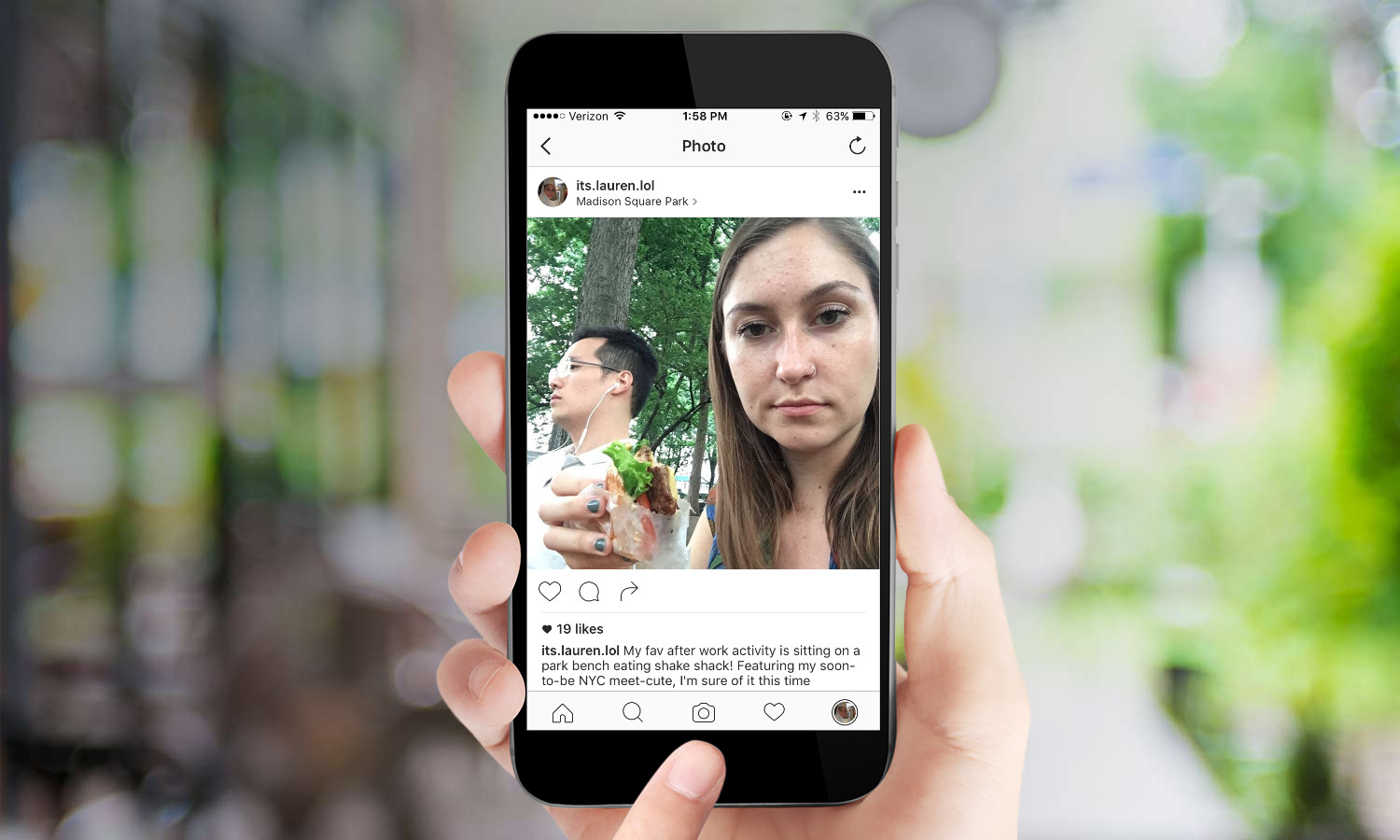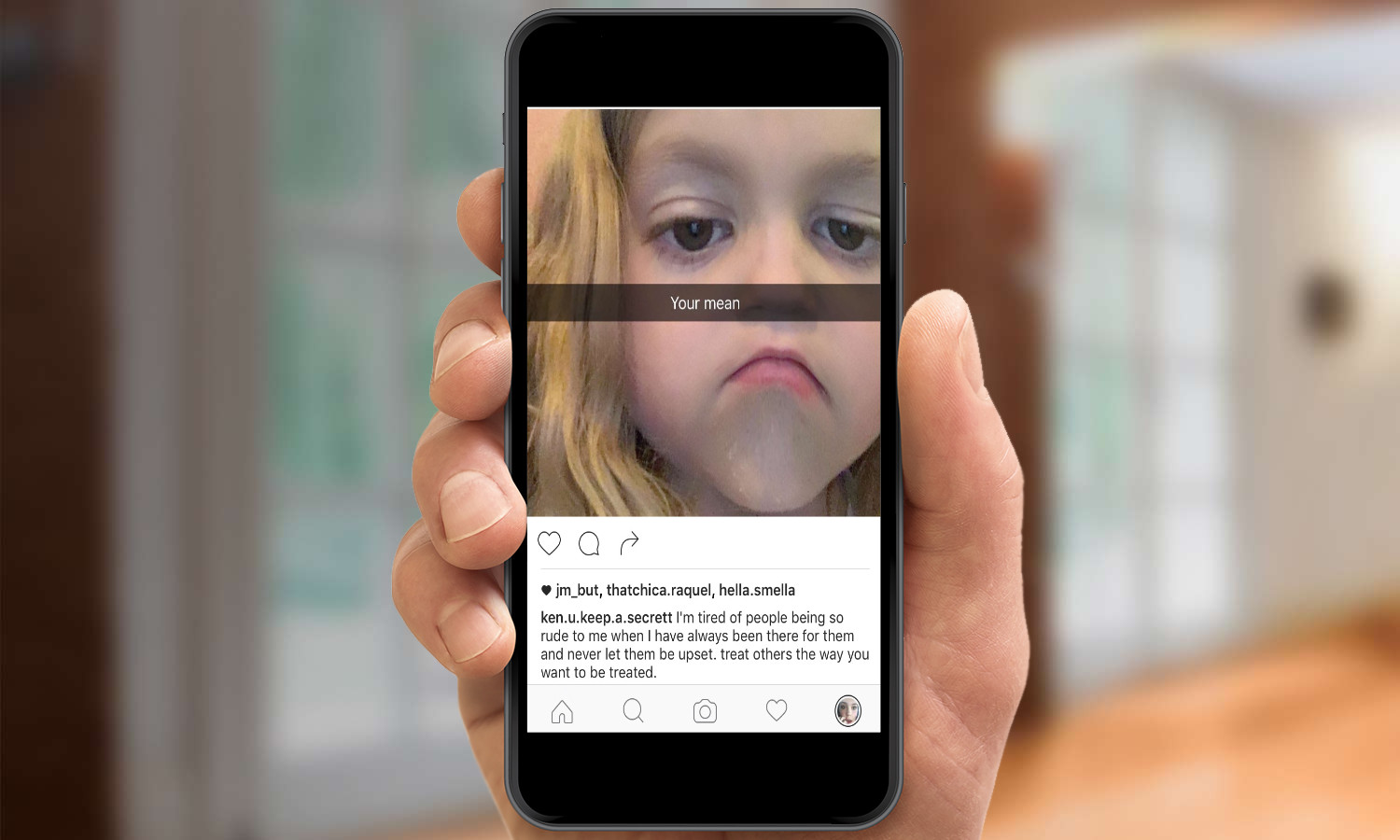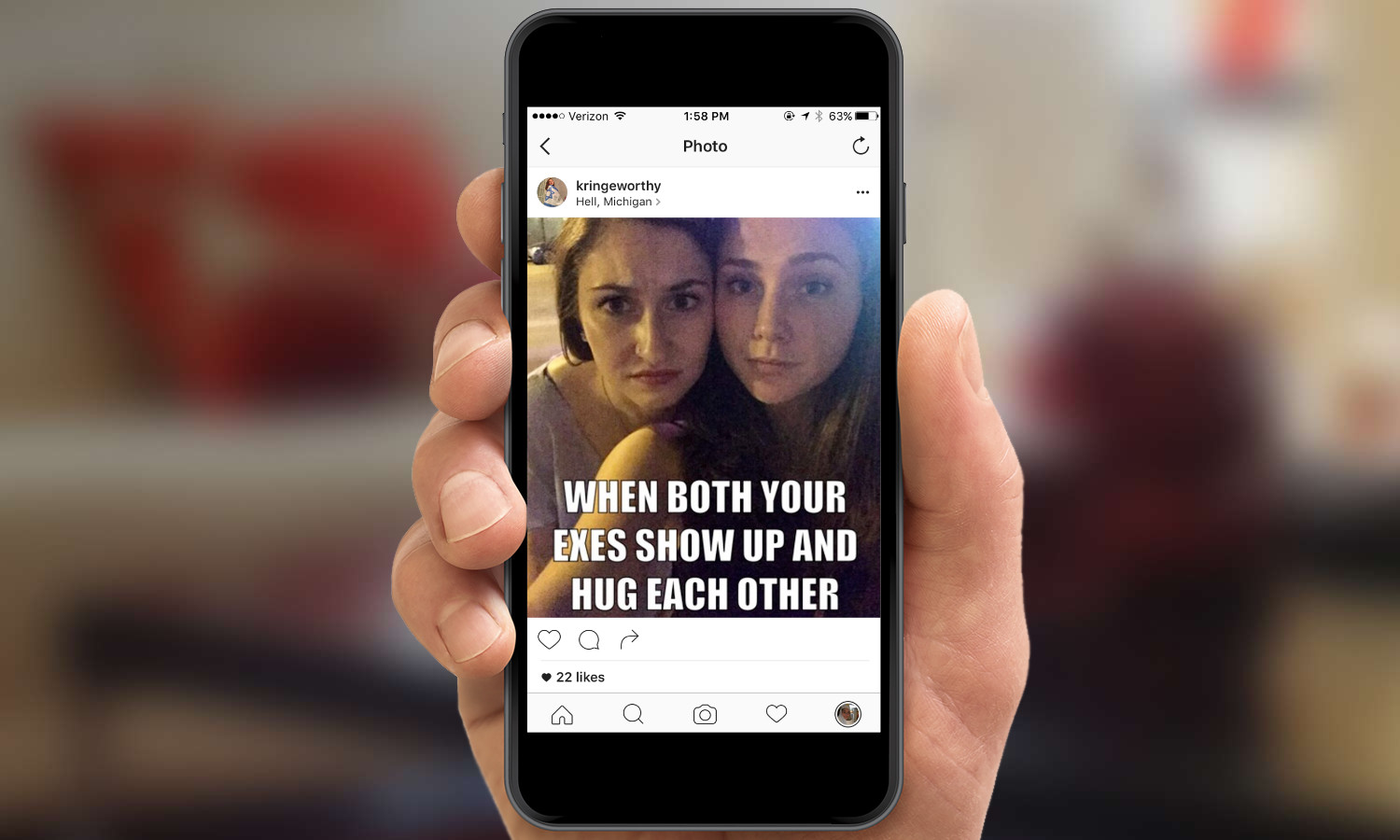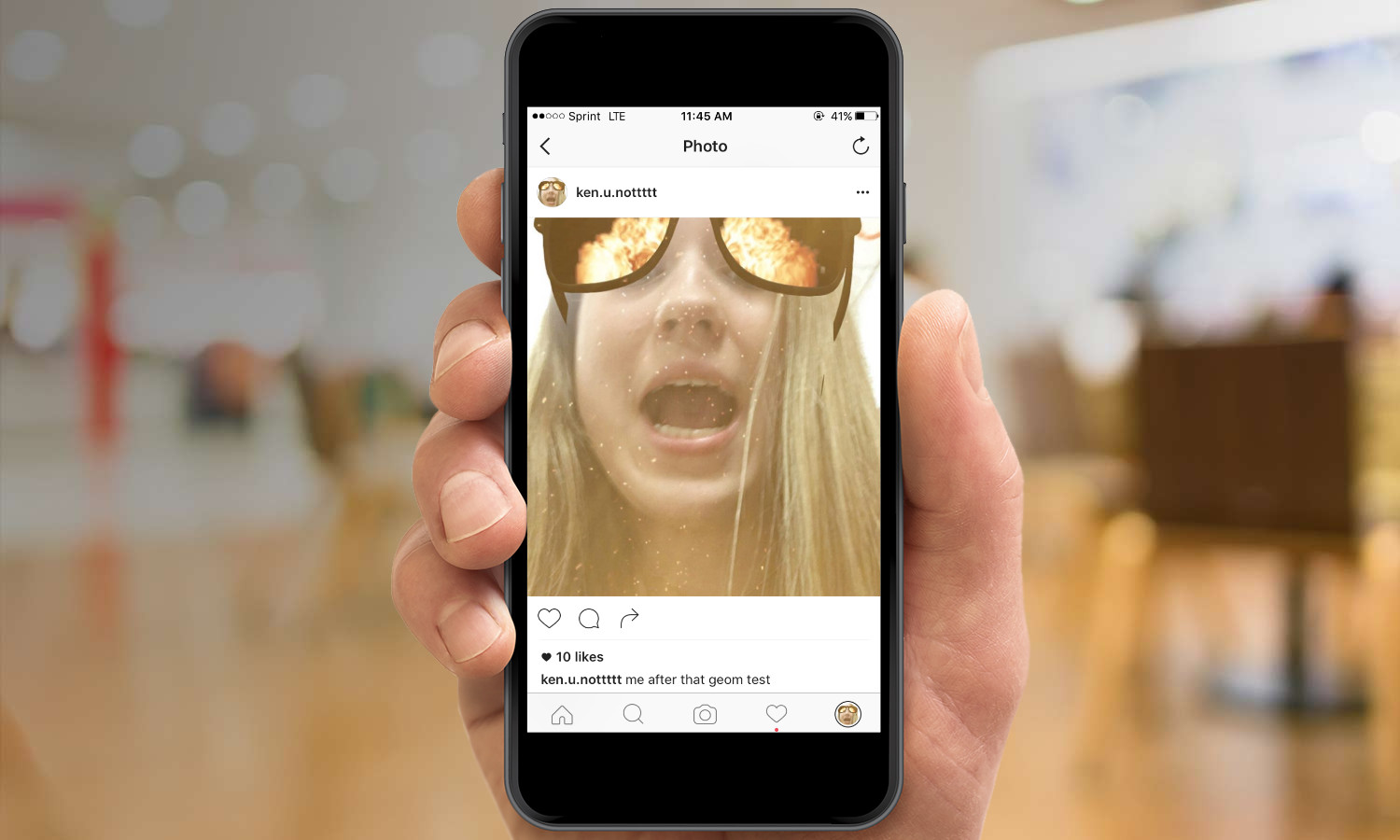What Is Finstagram?
With the emergence of fake Instagram accounts, or "Finstagrams," teens are taking charge of social media by creating anonymous online personas.
With more than 300 million daily active users and a focus on photography, Instagram has bridged the gap between the teen and adult worlds. It's now mainstream. If you're a parent who didn't initially jump on the Insta train, it's likely that somewhere along the way, your kids' use prompted you to create an account, if only so you could survey their activity firsthand. But your kids have already found a way to skirt your digital parental gaze. Don't be fooled — there's more to your teen's feed than perfectly manicured photos of friends and food.

Teens and young adults are thriving in the world of "Finstagram" or "fake Instagram" accounts. These accounts hide under pseudonyms and remain private, only to be followed by a select group of close friends.
Like in most instances of teens engaging in risky behavior on social media, the discovery of Finsta prompted backlash from in-the-know parents. But that only resulted in a much larger community of teens (and now, more frequently, young adults and college students) who utilize their "fake" accounts to create perhaps the most honest (though ill-conceived) presentations of themselves via social media.
Instagram didn't respond when we asked about the Finsta trend, but we interviewed several teens and early, college-age Finstagrammers to get to get a handle on this growing trend. Their names have been changed.
MORE: 19 Apps for Teens Every Parent Should Know
What is Finstagram?
Finstagram, as per Urban Dictionary, is a growing social media phenomenon wherein "people, usually girls" create a secondary Instagram account along with their real Instagrams, or "Rinstagrams," to post any pictures or videos they desire. While this sounds an awful lot like "real" Instagram, the catch is that only your closest friends follow your secondary Finsta account, and it's always set to private.
It's not always about posting evidence of inappropriate behavior.
There's no way of knowing exactly how many of these accounts exist; as far as Instagram's policies are concerned, Finsta accounts look like every other Instagram account. The terms of service are not violated by creating multiple accounts as long as you're not masquerading behind someone else's identity, and are over the age of 13.
What is the difference between photos on Rinsta versus Finsta?
It's easy to jump to conclusions about what sort of content teens are posting via a Finsta — why make a secondary, private account if your photos are appropriate enough to be shared? But for the majority of the Finsta community, having a "fake" account is actually as real as it gets.

Alyssa, age 15, said her Finstagram (what she calls her "spam account") is really just a space to communicate, functioning similarly to Twitter or Facebook. With around 500 followers on her real account, she said the 23 on her fake account are her "real-life friends." A quick post on Finsta could let her close friends know what she's up to that day, share a relatable photo or, on occasion, rant about something frustrating going on in her personal life. It's not always about posting evidence of inappropriate behavior.
Sarah, age 15, said she hardly posts as many photos on her real account as she does on her fake account because the pressure is off.
"Having a spam itself is nice, because whenever you have a thought, you just post it," she said. "Whenever you're like, 'I'm so annoyed right now, let me just post it on my spam so that other people can relate with me'’ that's really what I use it for."

Sarah, age 15, said she hardly posts as many photos on her real account as she does on her fake account because the pressure is off.
"I basically only post birthday photos for people," Sarah said. "But they're always edited nicely, always with everyone looking really happy, and really good. And then it's the complete opposite on my spam."
What about illegal content?
These kids aren't squeaky clean, however. The anonymity does offer teens a space to post content they wouldn't want everyone (including parents) to see — like screenshots of text conversations they're having, complaints about school or friends, and, for some teens, photo proof of illegal activity.

Sarah told us that her feed and those of many of her friends are full of mostly harmless content, but on occasion, her Finsta photos clearly indicate underage drinking.
"I think that, yeah, some of the things me and my friends post could get us into trouble," Sarah said. "There could be photos of people holding up bottles, or clearly drinking."
How private is a private account?
Instagram allows any user to create an account that is designated as either public or private. On a public account, anyone who knows your username can follow, like and comment. With a private one, you must approve anyone who requests to follow your account. This setting can be changed via the Instagram settings menu.

The only privacy benefit that Finstagram offers is the creation of a pseudonym, which, typically is not a name that people would know, unless you told them. Finding a Finsta name is an art itself; if you Google "Finstagram," the first result is "Finstagram names."
MORE: How to Block Or Unfollow Someone On Instagram
But it seems the teens I spoke to are just as aware of and concerned about privacy as any parent would be. Kelsey, age 14, said Finstagram is a safer, more controlled space to let your feels out on the Internet, compared to other social media like Twitter and Snapchat.
Finstagram has created a space where likes are devalued; content and comments are more important.
"With retweets, it's so easy on Twitter to make something so public," Kelsey said. "I feel like it's easier to know who can see what on Instagram, like the same reasons you don't put something on Snapchat. It's just easier to control who sees what."
How often do you post on Finsta?
Most teens we interviewed said they post to their spam accounts much more often than they do to their regular accounts. Since Instagram is typically a front-runner when it comes to like-based media, this is something totally new. Finstagram has created a space where likes are devalued; content and comments are more important, said those teens I spoke to.
MORE: How to Post to Instagram Directly from your iPhone
Sarah, who has just 30 Finstagram followers compared to more than 1,000 on her real account, explained that the usual pressure she feels to garner as many likes as possible virtually disappears with less followers and more privacy.
"I feel like there's a certain ratio I have in my mind for my real Instagram," Sarah said. "It's almost like I have to get a certain amount of likes."
What happens in the comments section?
With a Finstagram account, it doesn't matter if you have two likes or 200; the comments section is what matters to these kids, they said. Comments function more or less like a forum. Captions and comments on a more private account are a way to quickly reach all of your close friends, organize plans, pass along information or share your #mood.

"A lot of people will just have conversations," Kelsey said. "Like, if I post something and it's relatable, they'll comment and be like, 'Oh my god, same,' or 'I feel this.' Then, if you post something on your real Instagram, the only comments that are there are like, 'This is so cute,' or 'You're so pretty.'"
Should parents be concerned about cyberbullying?
Finsta certainly has the potential to take a nasty turn toward cyberbullying, especially when it's so simple to take a screenshot of any content and repost it. So it's important to have an open dialogue with your kids. Though most teens use their secondary accounts for basic communication, the perceived exclusivity and privacy provided by fake accounts can be risky.
Overall, it seems the Finsta trend is just another case of teens seeking out a space to express themselves free from adult scrutiny. Like with any social media, the best thing to preach is caution, privacy and kindness online.
• How to Report Bullying and Abuse Online
• Best Parental-Control and Cellphone-Monitoring Apps
• An Easy Skype Guide for Parents
Sign up to get the BEST of Tom's Guide direct to your inbox.
Get instant access to breaking news, the hottest reviews, great deals and helpful tips.
Lauren L'Amie is an SEO Content Strategist at Wirecutter, and was previously an editor for Tom's Guide, writing mainly about phones and social media. She has also written for Cosmopolitan, New York Magazine, and The Daily Dot, focusing on a range topics from health, sex, and lifestyle to news and politics.
